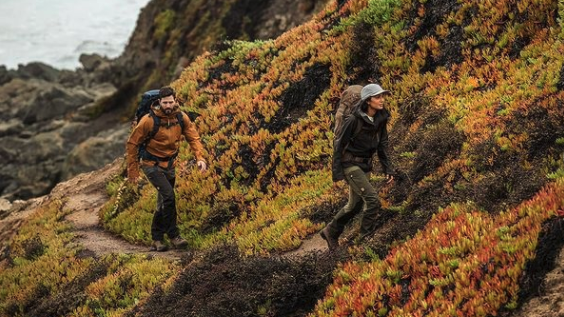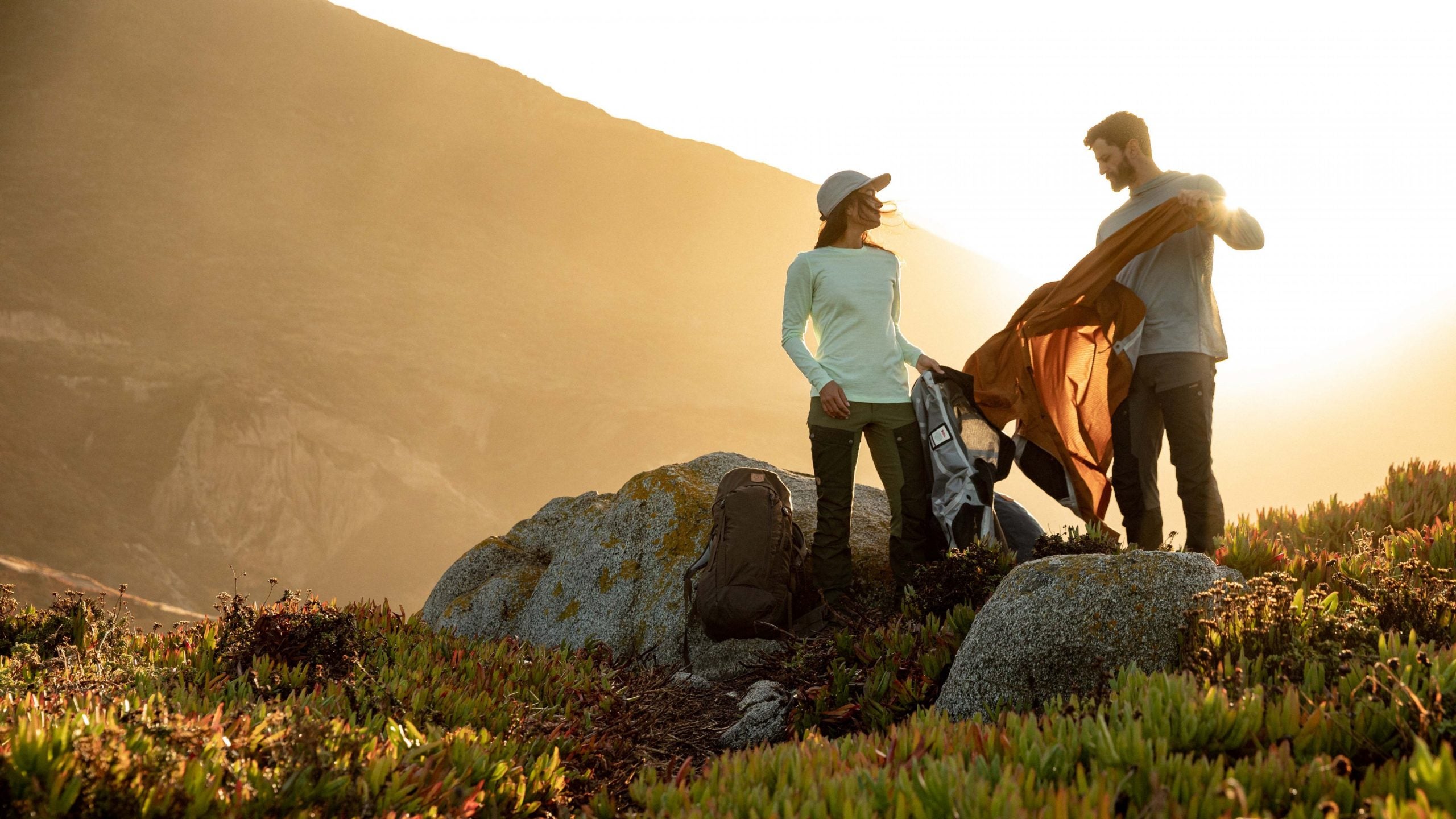Recently a customer walked into the San Francisco ╣ˇ┬ß├Ą▒˘▒˘░¨├Ą▒╣▒▓ď store. He was carrying a long-loved┬á, a classic the Swedish brand has been making since 1968. This particular jacket was about ten years old and the front zipper was busted. The customer didnÔÇÖt want a new jacket; his old one still worked great. He just needed the zipper repaired.
Good thing repair services are offered for the life span of every ╣ˇ┬ß├Ą▒˘▒˘░¨├Ą▒╣▒▓ď product. So, the storeÔÇÖs in-house tailor went to work: she removed the snaps, ordered new parts, and installed a new zipper. The jacket was better than new.
The Trekker's Handbook
 From expert tips to gear recommendations to trail inspiration, we teamed up with Swedish gearmaker ╣ˇ┬ß├Ą▒˘▒˘░¨├Ą▒╣▒▓ď to help you make the most of your time in nature.
From expert tips to gear recommendations to trail inspiration, we teamed up with Swedish gearmaker ╣ˇ┬ß├Ą▒˘▒˘░¨├Ą▒╣▒▓ď to help you make the most of your time in nature.ÔÇťOur main mission is to patch it, sew it, and piece it together for as long as the item will allow it,ÔÇŁ says Natalie Ferris, lead tailor at ╣ˇ┬ß├Ą▒˘▒˘░¨├Ą▒╣▒▓ď North America. ÔÇťOur customers are investing in a product made as consciously as possible and we want to return that loyalty by doing what we can to keep them out in nature for as long as possible with a minimal environmental impact.ÔÇŁ
In an age when fast fashion is quickly filling landfills (did you know that┬á and the average American throws out 80 pounds of textile waste each year?), outdoor brands like ╣ˇ┬ß├Ą▒˘▒˘░¨├Ą▒╣▒▓ď understand the intersection between durability and sustainability. Because if you can keep a product in use longer, youÔÇÖre saving waste, reducing the production of new materials, and building gear thatÔÇÖs meant to last generations, not just seasons.
ÔÇťBeing aware of our footprint on the world, the quickest and most direct way to address that with our customers is repairing their existing product versus tossing and replacing items,ÔÇŁ Ferris says. ÔÇťOur design team in Sweden keeps repairs in mind throughout the entire design process, so that once an item reaches our tailors and is in need of repair, we can easily fix it and get you back outside in nature.ÔÇŁ

╣ˇ┬ß├Ą▒˘▒˘░¨├Ą▒╣▒▓ď prioritizes using┬á in its fabrics, ranging from traceable wool to recycled polyester to organic hemp. But its designers understand that itÔÇÖs not enough just to make gear using recycled and sustainable materials. Building gear to last a lifetime is the ultimate sustainability model.
Products at ╣ˇ┬ß├Ą▒˘▒˘░¨├Ą▒╣▒▓ď are made with durability in mind at every level of the design. Materials like fabrics and buttons are selected for functionality as well as resiliency. Areas known for hard wear and tear, like zippers and pockets, are designed to be easy to replace or repair. Treatments are provided to lengthen productsÔÇÖ lives, like a┬á made from beeswax and paraffin that adds durability to jackets and backpacks.
ÔÇťWe are finding more ways to reuse material that would otherwise go to waste,ÔÇŁ Ferris says. ÔÇťWhether it be using recovered wool that would otherwise be burned for some of our bags and jacket insulation, our completely traceable down, or our newest material, Pine Weave, which is made from tree pulp, we are always looking for the next step in reducing waste.ÔÇŁ
Durable, performance-oriented features are another key element in ensuring products can be used functionally for years to comeÔÇöan element at work in tough, technical knees like those on the┬á and the placement of easy-access pockets like the ones on the┬á.
Showing customers how to take proper care of their gear is a big component of that sustainability effort, too. Which is why if you walk into a ╣ˇ┬ß├Ą▒˘▒˘░¨├Ą▒╣▒▓ď Brand Center to browse backpacks or trekking trousers, youÔÇÖre also likely to be prepped on┬á whether thatÔÇÖs properly┬á or reapplying PFC-free durable water repellent to your waterproof layers.
ÔÇťYou canÔÇÖt expect something to last a lifetime if you donÔÇÖt clean it regularly or apply any recommended treatment to it,ÔÇŁ Ferris says. ÔÇťI encourage anyone who goes on any overnight trip to examine their gear closely when they get home. Proper care is key to a long life with any gear, be it a sleeping bag or a tote bag.ÔÇŁ
HereÔÇÖs another form of sustainability you might not expectÔÇöbut one that ╣ˇ┬ß├Ą▒˘▒˘░¨├Ą▒╣▒▓ď has been employing since a young Swede named ├ůke Nordin first sewed a wooden-framed backpack in his basement that later┬á: classic, timeless design.
How does the way a jacket or bag looks relate to sustainability? ItÔÇÖs simple: if a product looks dated, it will eventually get thrown out and replaced. But if itÔÇÖs got enduring style and long-lasting appealÔÇöand that comes down to fit, design, fabric, colors, and overall aestheticÔÇöthat piece can continue to be worn for years. The joke at ╣ˇ┬ß├Ą▒˘▒˘░¨├Ą▒╣▒▓ď stores is that customers better like what they pick out, because theyÔÇÖre going to have that item for a very long time. ╣ˇ┬ß├Ą▒˘▒˘░¨├Ą▒╣▒▓ď designers now call this quality ÔÇťemotional longevity,ÔÇŁ and itÔÇÖs one of their┬á. Because when something is well-loved, it will provide a lifetime of use in nature.
ÔÇťTimeless design has been a focus since day one,ÔÇŁ Ferris says. ÔÇťWe want you to have that jacket that gets passed down to your child, then your grandchild. We want to be that company known for classic, timeless designs that you can wear for the next 40 years and still look great.ÔÇŁ
In 1960, ├ůke Nordin founded┬á┬áin his basement in the Swedish town of ├ľrnsk├Âldsvik. Since then the brand has stayed true to its mission of developing timeless, functional, and durable outdoor equipment, acting responsibly toward people, animals, and the environment, and inspiring more people to discover outdoor life.

